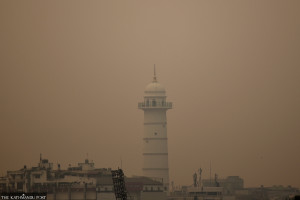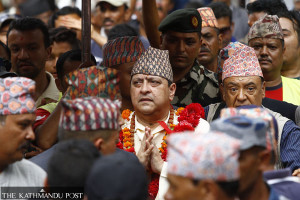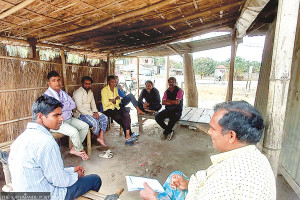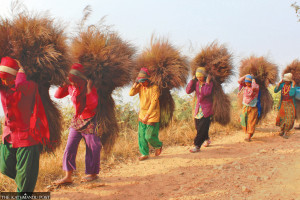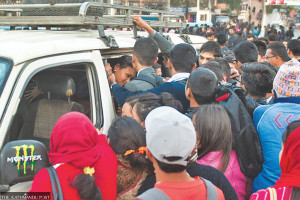 25.12°C Kathmandu
25.12°C KathmanduMiscellaneous
Govt not quite in tempo to meet 2017 universal basic sanitation goal
The government needs to bring intensive programmes focusing on mobilisation of resources and make the locals understand the importance of using toilets to meet the universal target of basic sanitation to all by the end of next year.
The government needs to bring intensive programmes focusing on mobilisation of resources and make the locals understand the importance of using toilets to meet the universal target of basic sanitation to all by the end of next year.
Government claims 87 percent of the total households in the country have access to basic sanitation facilities compared to 62 percent in 2011. However, the sanitation report prepared by the Joint Monitoring Report prepared by WHO and Unicef put the total coverage at 56 percent in 2015. “Reaching out to the remaining 13 percent households, mostly from the Tarai districts is a real challenge for us towards our aim to attend 100 percent coverage by 2017,” said Prem Shrestha, chief of the Environmental Sanitation Section at the Department of Water Supply and Sewerage.
According to Shrestha, the remaining households without sanitation access belong to the ultra poor, illiterate and socially excluded communities who have been practicing open defecation.
Most of the households belong to the Tarai districts where the overall Open Defecation coverage stands at just 55 percent compared to over 90 percent in the hill districts. “We have to come up with a special programme to address the problem in Tarai to bring a significant behavioural change among people and to encourage them to build toilets,” Shrestha said. “There is also a need of policy-level changes, including the subsidy mechanism for the ultra poor households, to help them build toilets,”.
The nine Tarai districts, namely Rautahat, Bara, Parsa, Dhanusha, Mahottari, Sarlahi, Saptari, Siraha and Sunsari, have the lowest sanitation coverage in the country.
In 2011, the government had developed a National Sanitation and Hygiene Master Plan with an ambitious target of achieving 100 percent total sanitation coverage by 2017. Six years down the line, only 38 of the 75 districts have been declared open defecation free and six more districts are in the process of being declared so.
A report prepared by Water Aid on the occasion of World Toilet Day states that more than 43 percent of Nepal’s urban population, particularly marginalised and vulnerable groups, has no access to a toilet, meaning many have no choice but to defecate in the open. Unsafe, inaccessible and shared common toilets with no running water are a common problem.










